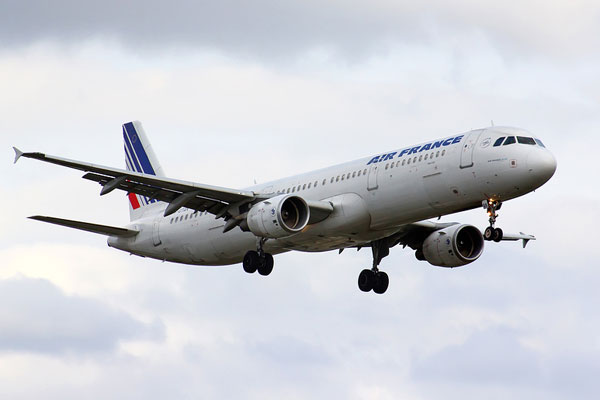
Air France faces probe after jet flies near mountain
PARIS, May 27, 2015
French investigators have opened a probe after an Air France jet with some three dozen people on board narrowly avoided hitting the highest mountain in central Africa in early May, according to information published by France's BEA air accident agency.
The Boeing 777 jet was making a short evening trip from Malabo, the capital of Equatorial Guinea, to Cameroon's largest city of Douala where it was due to pick up more passengers en route to Paris, when it ran into bad weather on May 2.
While cruising at about 9,000 feet, the pilots of Flight 953 diverted northwards to avoid storm clouds, but their route back towards Douala took their jetliner towards the 13,000-foot Mount Cameroun, the BEA and the airline said.
That triggered an emergency warning from an automated ground-proximity warning system urging the crew to take avoiding action, the BEA said in a regular update of new investigations.
The crew climbed straight to 'Flight Level 130' or about 13,000 feet before continuing to Douala. Mount Cameroon, an active volcano, stands at 4,090 metres or 13,400 feet.
Air France said the crew of Flight 953 had reacted in accordance with their training and the plane's manuals but that they had been taken off flying duties for more training.
Pending the airline's own investigation, they are receiving "pedagogical, managerial and medical support", a spokesman said.
Air France said it had also issued extra briefings to all crews about the landscape around the coastal city of Douala.
There were 23 passengers, three pilots and 10 cabin crew or 36 people in total on board the jet, the spokesman said, adding passengers would not have been aware of the cockpit scare.
However, the BEA, which counted 37 people on board, said it was investigating the avoidance manoeuvre as a "serious incident", pointing to a possible near-disaster.
Under aviation protocols, a serious incident is defined as an event in which an accident "nearly occurred".
According to the United Nations aviation agency, which sets rules for investigations, the classification may be used when a ground collision, for example, is only "narrowly avoided".
The cockpit's Enhanced Ground Proximity Warning System issues a staccato command ordering pilots to "pull up" when an aircraft gets too close to the ground, except when landing.
Although latest versions of the system leave extra time to react, pilots are trained to use full thrust and pull the control stick back without delay to climb out of trouble.
French regulators were accused of dragging their feet over the use of earlier types of the device, but made it compulsory after an Airbus jet operated by Air Inter, now part of Air France, crashed into Mont Sainte-Odile in France in 1992.
In a separate incident, aviation websites reported that an Airbus A330 flown by Singapore Airlines lost power on both engines en route from Singapore to Shanghai on May 23. Power was restored after pilots staged a partial descent.
"We are in contact with the airline and Rolls-Royce to determine the cause of this incident," an Airbus spokesman said.
Engine maker Rolls-Royce and Singapore Airlines were not immediately available for comment. – Reuters







